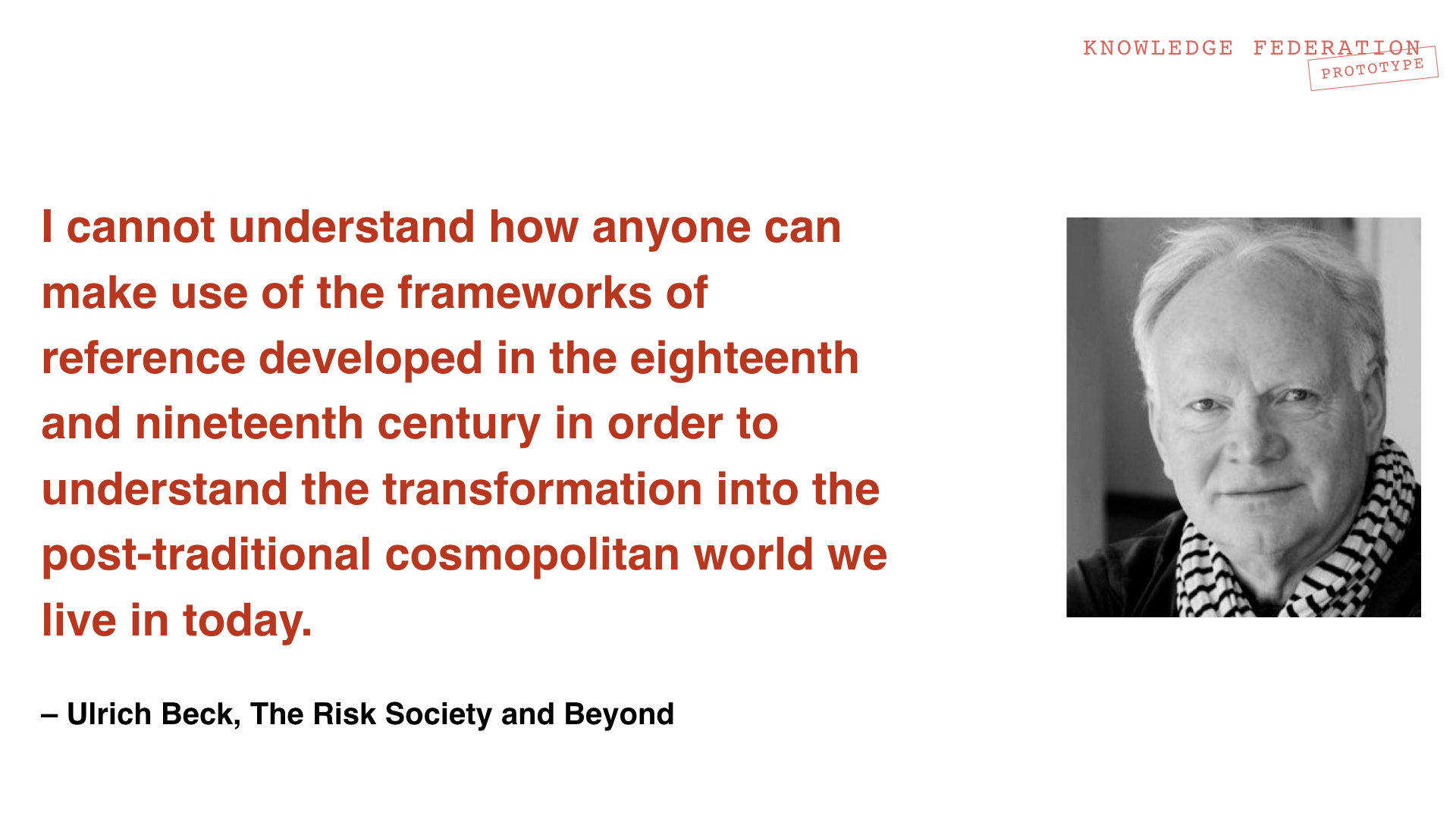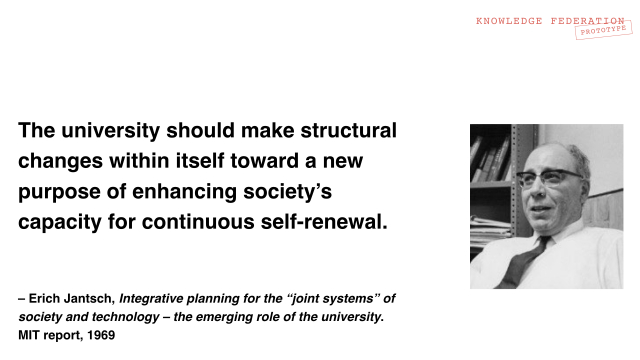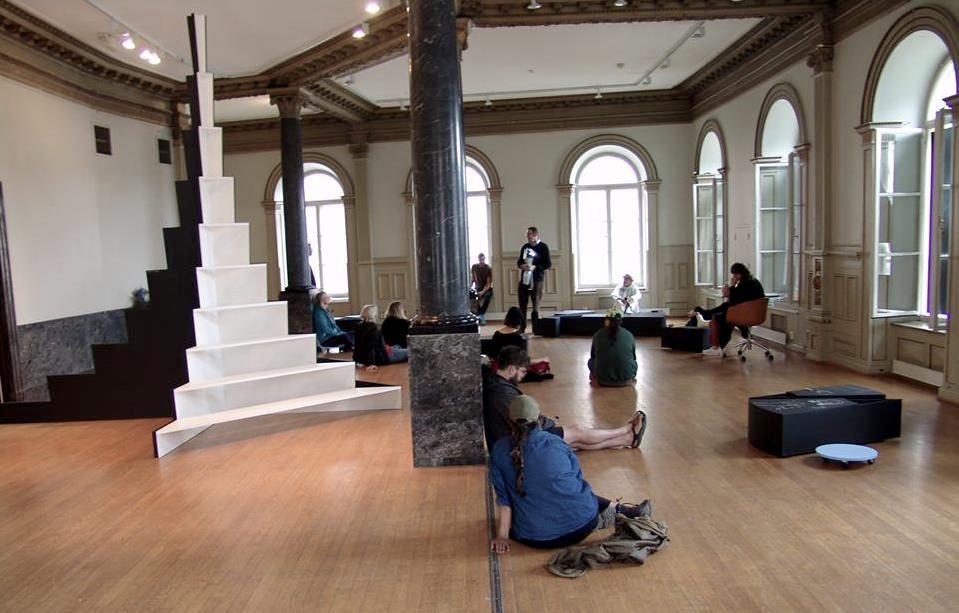Difference between revisions of "Holotopia"
m |
m |
||
| Line 563: | Line 563: | ||
<p>We bring these lofty and "up in the air" possibilities down to earth, by discussing one of the more immediately practical consequences of the proposed course of action.</p> | <p>We bring these lofty and "up in the air" possibilities down to earth, by discussing one of the more immediately practical consequences of the proposed course of action.</p> | ||
| − | |||
| − | |||
| − | |||
| − | |||
| − | |||
| − | |||
| − | |||
| − | |||
| − | |||
| − | |||
| − | |||
<p>The [[keyword|<em>keywords</em>]] we've been using all along are all defined by convention.</p> | <p>The [[keyword|<em>keywords</em>]] we've been using all along are all defined by convention.</p> | ||
| Line 844: | Line 833: | ||
</div> </div> | </div> </div> | ||
| + | |||
| + | BBB --> | ||
| Line 850: | Line 841: | ||
<div class="col-md-7"> | <div class="col-md-7"> | ||
| − | |||
| − | <p> | + | <p>When the <em>five insights</em> are combined together, they readily lead to a more general <em>sixth insight</em>, which is even more germane to the <em>holotopia</em>'s message and spirit. The <em>sixth insight</em> may be roughly formulated as follows:</p> |
| − | < | + | <blockquote>To change anything, we need to change the whole thing.</blockquote> |
| − | <p>The | + | <p>The reason is the close co-dependence of both the structural problems the <em>five insights</em> reveal, and of their solutions.</p> |
| − | <p> | + | <p>We have seen (while exploring the <em>power structure</em> insight) that we will not be able to resolve the characteristic contemporary issues and resume our cultural and societal evolution, unless we learned to direct our power to innovate by using suitable information and knowledge, instead of the "free competition" and the market. But that requires (as we have seen while exploring the <em>collective mind</em> insight) that we restore the severed tie between information and action—that instead of merely broadcasting information, we learn to <em>federate</em> the insights that can motivate and inform action. This, however (as the <em>socialized reality</em> insight showed) requires that we change the relationship we have with information—from considering it as a mirror image of reality, to considering it a vital element of our core <em>systems</em>, which must be adapted to the purposes it needs to serve within those <em>systems</em>. </p> |
| − | <p> | + | <p>When that is done (the <em>narrow frame</em> insight showed)—the opportunity opens up to <em>create</em> "the way we look at the world, try to comprehend and handle it", to be used both by academic researchers who wish to work in this way, and the general public. And when that is in place (we showed while exploring the <em>convenience paradox</em> insight), the resulting <em>informed</em> way of "pursuing happiness" will lead to completely different values, and direction. Furthermore, the values that result will be exactly those that are needed to empower us to resolve the <em>power structure</em> issue, by self-organizing and co-creating <em>systems</em> that <em>resolve</em> our problems. This closes the circle.</p> |
| − | <p> | + | <p>A <em>strategic</em> insight results:</p> |
| − | < | + | <blockquote>A large change may be easy; small changes may be difficult or impossible.</blockquote> |
| − | <p> | + | <p>But a large and comprehensive change has its own logic, or process, or "leverage points". </p> |
| − | < | + | <p>And the most powerful <em>kind of</em> leverage point, [http://kf.wikiwiki.ifi.uio.no/CONVERSATIONS#Donella Donella Meadows pointed out], is "the power to transcend paradigms". It is exactly that power that we are proposing to restore.</p> |
| − | |||
| − | < | + | <p>We summarize the case for our proposal by a warning reaching us from sociology.</p> |
| + | <p> | ||
| + | [[File:Beck-frame.jpeg]] | ||
| + | </p> | ||
| + | <p>Beck continued the above observation:</p> | ||
| + | <blockquote> | ||
| + | "Max Weber's 'iron cage' – in which he thought humanity was condemned to live for the foreseeable future – is for me the prison of <em>categories and basic assumptions</em> of classical social, cultural and political sciences." | ||
| + | </blockquote> | ||
| − | <p> | + | <p>The 'candle headlights' (<em>inheriting</em> the way we look at the world, try to comprehend it and handle it) is what keeps us in 'iron cage'.</p> |
| − | <blockquote> | + | <blockquote>A <em>created</em> way, modeled by the <em>holoscope</em>, is an academically rigorous way out.</blockquote> |
| − | <p>The | + | <p>The <em>holotopia</em> is offered as the vision that results.</p> |
| − | <p> | + | <p>The Holotopia project is conceived as a way to streamline the actualization of that vision.</p> |
| − | <p> | + | <p>When making this proposal, we are not saying anything new; we are indeed only <em>federating</em> the call to action that <em>many</em> have made before us.</p> |
| + | <p> | ||
| + | [[File:Jantsch-university.jpeg]] | ||
| + | </p> | ||
| + | <p>We are now, however, backing their calls to action and ideas by <em>federating</em> them, and showing that they form a consistent and complete <em>academic</em> paradigm.</p> | ||
| − | + | </div> </div> | |
| − | < | + | <b>This project description will be completed by</p> |
| − | < | + | <div class="page-header" ><h2>A strategy</h2></div> |
| − | <p>The | + | <div class="row"> |
| + | <div class="col-md-3"></div> | ||
| + | <div class="col-md-6"> | ||
| + | |||
| + | <blockquote>The Holotopia project is conceived as a co-creative strategy game</blockquote> | ||
| + | |||
| + | <p>The project is conceived as a space—where we are empowered to use our creativity to "change course", and <em>create</em> a future. This "future", however, begins instantly.</p> | ||
| − | <p>We | + | <p>We implement a strategy that <em>federates</em> Margaret Mead's specific insights, how to respond to the situation we are in : |
| + | <blockquote> | ||
| + | "(W)e are living in a period of extraordinary danger, as we are faced with the possibility that our whole species will be eliminated from the evolutionary scene. One necessary condition of successfully continuing our existence is the creation of an atmosphere of hope that the huge problems now confronting us can, in fact, be solved—and can be solved in time." | ||
| + | </blockquote> </p> | ||
| + | </div> | ||
| − | < | + | <div class="col-md-3"> |
| + | [[File:Mead.jpg]]<br> | ||
| + | <small>Margaret Mead</small> | ||
| + | </div> </div> | ||
| + | <div class="page-header" ><h2>Tactical assets</h2></div> | ||
| − | |||
| − | < | + | <div class="row"> |
| + | <div class="col-md-3"></div> | ||
| + | <div class="col-md-7"><p>To the above co-creative space we bring a portfolio of assorted <em>tactical assets</em>. </p> | ||
</div> </div> | </div> </div> | ||
| + | |||
| + | <div class="page-header" ><h2>A pilot project</h2></div> | ||
| + | |||
| + | |||
| + | <div class="row"> | ||
| + | <div class="col-md-3"></div> | ||
| + | <div class="col-md-7"><p>To bring all this down to earth, we describe the pilot project we've developed in art gallery Kunsthall 3.14 in Bergen. </p> | ||
| + | |||
| + | |||
| + | [[File:KunsthallDialog01.jpg]] | ||
| + | <br> | ||
| + | |||
| + | |||
| + | |||
| + | |||
| + | <!-- CCC | ||
<div class="page-header" ><h2>A strategy</h2></div> | <div class="page-header" ><h2>A strategy</h2></div> | ||
Revision as of 08:25, 29 August 2020
Contents
HOLOTOPIA
An Actionable Strategy
Imagine...
You are about to board a bus for a long night ride, when you notice the flickering streaks of light emanating from two wax candles, placed where the headlights of the bus are expected to be. Candles? As headlights?
Of course, the idea of candles as headlights is absurd. So why propose it?
Because on a much larger scale this absurdity has become reality.
The Modernity ideogram renders the essence of our contemporary situation by depicting our society as an accelerating bus without a steering wheel, and the way we look at the world, try to comprehend and handle it as guided by a pair of candle headlights.
The sixth insight
When the five insights are combined together, they readily lead to a more general sixth insight, which is even more germane to the holotopia's message and spirit. The sixth insight may be roughly formulated as follows:
To change anything, we need to change the whole thing.
The reason is the close co-dependence of both the structural problems the five insights reveal, and of their solutions.
We have seen (while exploring the power structure insight) that we will not be able to resolve the characteristic contemporary issues and resume our cultural and societal evolution, unless we learned to direct our power to innovate by using suitable information and knowledge, instead of the "free competition" and the market. But that requires (as we have seen while exploring the collective mind insight) that we restore the severed tie between information and action—that instead of merely broadcasting information, we learn to federate the insights that can motivate and inform action. This, however (as the socialized reality insight showed) requires that we change the relationship we have with information—from considering it as a mirror image of reality, to considering it a vital element of our core systems, which must be adapted to the purposes it needs to serve within those systems.
When that is done (the narrow frame insight showed)—the opportunity opens up to create "the way we look at the world, try to comprehend and handle it", to be used both by academic researchers who wish to work in this way, and the general public. And when that is in place (we showed while exploring the convenience paradox insight), the resulting informed way of "pursuing happiness" will lead to completely different values, and direction. Furthermore, the values that result will be exactly those that are needed to empower us to resolve the power structure issue, by self-organizing and co-creating systems that resolve our problems. This closes the circle.
A strategic insight results:
A large change may be easy; small changes may be difficult or impossible.
But a large and comprehensive change has its own logic, or process, or "leverage points".
And the most powerful kind of leverage point, Donella Meadows pointed out, is "the power to transcend paradigms". It is exactly that power that we are proposing to restore.
We summarize the case for our proposal by a warning reaching us from sociology.
Beck continued the above observation:
"Max Weber's 'iron cage' – in which he thought humanity was condemned to live for the foreseeable future – is for me the prison of categories and basic assumptions of classical social, cultural and political sciences."
The 'candle headlights' (inheriting the way we look at the world, try to comprehend it and handle it) is what keeps us in 'iron cage'.
A created way, modeled by the holoscope, is an academically rigorous way out.
The holotopia is offered as the vision that results.
The Holotopia project is conceived as a way to streamline the actualization of that vision.
When making this proposal, we are not saying anything new; we are indeed only federating the call to action that many have made before us.
We are now, however, backing their calls to action and ideas by federating them, and showing that they form a consistent and complete academic paradigm.
This project description will be completed by</p>
A strategy
The Holotopia project is conceived as a co-creative strategy game
The project is conceived as a space—where we are empowered to use our creativity to "change course", and create a future. This "future", however, begins instantly.
We implement a strategy that federates Margaret Mead's specific insights, how to respond to the situation we are in :
"(W)e are living in a period of extraordinary danger, as we are faced with the possibility that our whole species will be eliminated from the evolutionary scene. One necessary condition of successfully continuing our existence is the creation of an atmosphere of hope that the huge problems now confronting us can, in fact, be solved—and can be solved in time."
Tactical assets
To the above co-creative space we bring a portfolio of assorted tactical assets.
A pilot project





